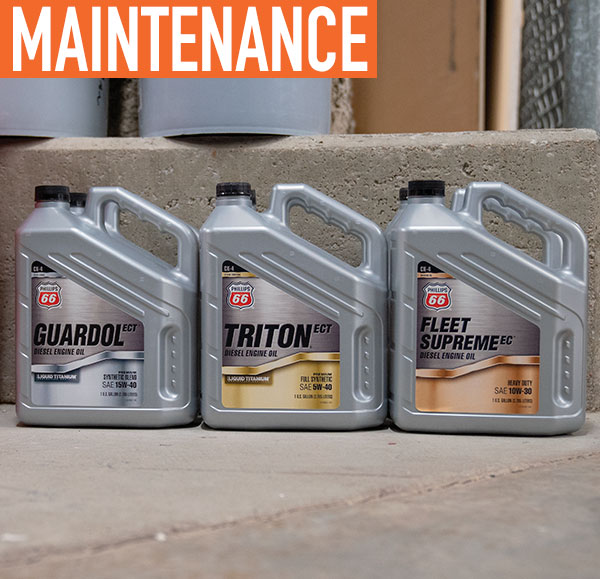With the creation of two diesel engine oil categories a few years ago and a growing number of engine oil viscosities for gas and diesel engines, shops need to properly accommodate numerous oils. Training technicians and service people about their application is very important so that misapplications don’t occur, which could result in expensive engine damage and could void manufacturer warranties.
THE MANY TYPES
For diesel engines, 15W-40 engine oil was the dominant viscosity grade for many years, but now 10W-30, 5W-40, and even 0W-40 for cold climates are common for diesel engines. For gasoline engines, 5W-30 and 10W-30 are common, but 5W-20 and 0W-20 are more widely used.
The biggest change in past few years was splitting the diesel engine oil category into two separate categories. API CK-4 oils succeeded CJ-4 engine oils and are backward compatible diesel oils. Backward compatible means CK-4 may be used where CJ-4, CI-4 with CI-4 PLUS, CI-4, CH-4, and earlier service categories are recommended. On the other hand, API FA-4 is new and intended for engines beginning with the 2017 model year.
While FA-4 oils are not in wide use yet, preparing for them is important. Fleets, shops, and technicians also need to know how to manage CJ-4, CK-4, and FA-4 oils in their facilities. It is recommended that you develop a plan for the shop; there may be a need for increased storage and the clear identification of the lubricants will reduce confusion. There are currently more than 800 CK-4 oils and more than 70 FA-4 oils licensed by API in North America and more are expected.
Estimate the volumes of each oil you will require, particularly if you own or service trucks that are 2017 and beyond. Always check with the truck manufacturer to see whether they require FA-4 or CK-4 oil and the viscosity grade needed.
PROPER STORAGE
Here are some things you can do to ensure that diesel oils are installed and dispersed properly.
Bulk Tanks—If you haven’t already done so, replacing CJ-4 with CK-4 oil is a simple transition because CK-4 is backward compatible and an improvement over CJ-4. Be sure to clean all tanks that are transferred to a new oil. You can still carry CJ-4 oils in drums if you want to keep some on hand.
Identification—Clearly mark all bulk or packaged oil as appropriate for API CJ-4, CK-4, and FA-4 oil.
Dispensing Oil—All dispensing equipment should be properly labeled with product name and viscosity grade to prevent misapplication.
Education—Technicians should be aware of the changes to oil categories and requirements for each.
For any diesel or gas oil, be certain to mark tanks, storage, tools, etc. to avoid commingling different products and misapplication. Reassess your shop’s need for all the oils you stock and eliminate older oils such as CJ-4, which should no longer be necessary. Also evaluate specific viscosity grades and adjust inventory to ensure you stock the proper supply of the most used oils. If you plan to make changes, set a specific date and clearly communicate that information to staff.
ABOUT THE AUTHOR
Kevin Ferrick serves as product programs director in API’s Global Industry Services Department. Mr. Ferrick manages all of API’s licensing and certification programs that pertain to product quality. Mr. Ferrick became the product programs director in March 2019. His duties include the management of key groups that advise API on the management and operation of the Monogram, APIQR, and engine oil programs. For more, visit www.api.org.
MODERN WORKTRUCK SOLUTIONS:
OCTOBER 2019 ISSUE
Did you enjoy this article?
Subscribe to the FREE Digital Edition of Modern WorkTruck Solutions magazine.





